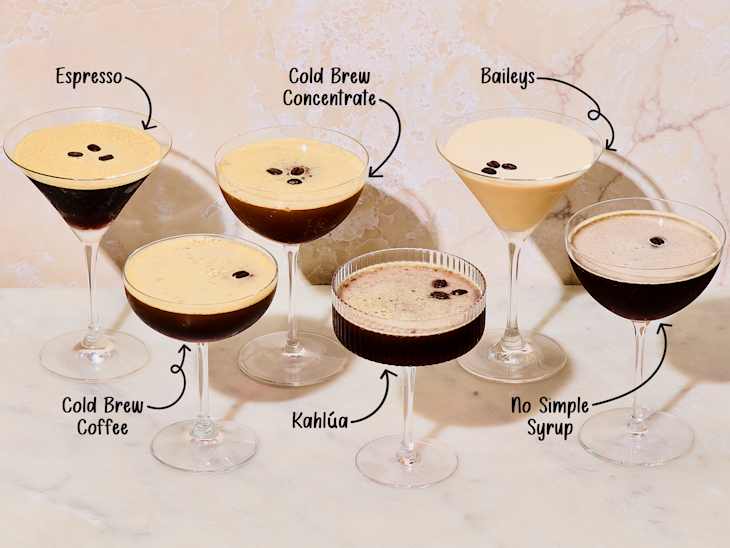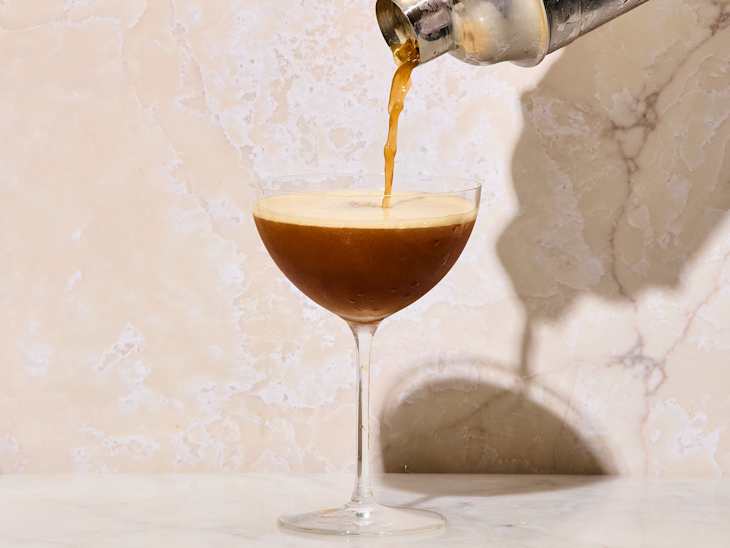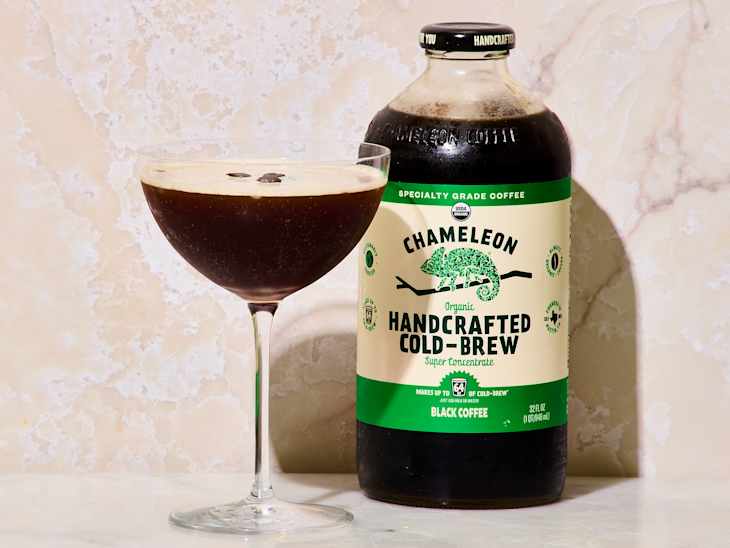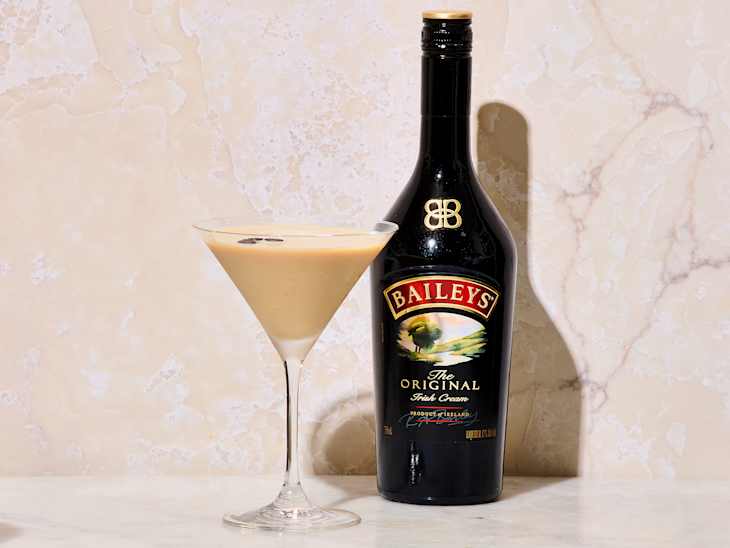

The espresso martini famously originated in the 1980s at a bar in London — a libation concocted to appease a salty request from an unnamed model. The cocktail hit its first peak of popularity in the 1990s, fell out of favor for a couple of decades, and is experiencing a mid-2020s renaissance, fueled in part by the coffee culture boom, interest in craft cocktails, and social media hype. It’s a gorgeous cocktail, after all, dramatically dark with an intriguing cap of creamy foam. And it appeases those who enjoy sippers with sweetness but who also need some backbone in their beverage (here, in the form of a bracing caffeine jolt and a generous glug of booze).
There are different approaches that claim to make the best iteration of an espresso martini. Some employ different sources of the espresso part of the drink, while others use different liqueurs to complement the flavors. Yet another approach makes for a much-less-sweet drink by omitting the customary splash of simple syrup. Which version lives up to the promise of a perfect espresso martini? Read on to find out.
So, What’s the Best Way to Make an Espresso Martini?
Though it may seem counterintuitive, for an iconic, classic espresso martini with a smooth, balanced flavor, skip the espresso altogether and opt for cold brew concentrate, which holds its own against the vodka and customary additions of simple syrup and coffee liqueur.
A Few Notes on Methodology
- The base recipe. For all of the tests, I used our espresso martini recipe as my starting point, noting any points of differentiation in my description of each method.
- The liquor. Every espresso martini version I tested included vodka. I used my favorite one, an 80-proof, locally distilled vodka with a clean, smooth flavor. Most of the other tests included coffee liqueur, and I chose classic Kahlúa. One test called for Irish cream, and I went with Baileys.
- The simple syrup. I made a basic simple syrup with a 1-to-1 ratio of sugar to water, not a rich, more concentrated version.
- The testing. I embarked on three tiers of testing, spacing them out over two days to give my taste buds a rest. For Tier 1, I tried different espresso/coffee options, going from coffee shop–procured espresso to cold brew concentrate, diluted and undiluted. I tasted these cocktails individually and side by side to determine a winner. Tier 2 involved proceeding with the winner of Tier 1 and choosing between Kahlúa and Baileys. Tier 3 was a test of the winner from Tier 2, but made without simple syrup. I tasted Tier 2 and 3 cocktails individually and side by side to declare an overall winner. The methods below are listed in the order I tested them — not from lowest rated to highest rated — so you can follow along with my testing process.
- The mixing method. For each martini, I followed the mixing instructions in the base recipe linked above: I poured the ingredients in a cocktail shaker, filled the shaker halfway with ice, sealed the shaker, and shook vigorously for 20 or so seconds. I immediately strained the cocktail into a chilled coupe glass.
- Ratings. I rated each method on a scale of 1 to 10, with 10 reserved for a perfectly balanced cocktail offering bitterness and sweetness in harmony.

Method #1: Espresso
- Rating: 7/10
About this method: My “tier 1” testing was all about the coffee component of an espresso martini. For this first test in tier 1, I followed the base recipe (linked above) using 1 ounce of real-deal espresso. I purchased a quad shot (to make sure I had enough for multiple tests, if needed) from a local coffee shop and allowed it to cool to room temperature before shaking with ice and the remaining ingredients (vodka, coffee liqueur, simple syrup).
Results: I know that this is the classic version of the cocktail, but it seemed a little unbalanced, bordering on syrupy sweet. I tasted the espresso on its own to make sure it wasn’t at fault, and it was perfectly robust, rich, bitter, and slightly acidic — so I don’t think it was the problem. Some of the nice fruity coffee notes came through in the cocktail, but overall the drink was just a bit too cloying.

Method #2: Cold Brew Coffee
- Rating: 6/10
About this method: For my second test in tier 1, I used Chameleon brand espresso cold brew concentrate and diluted it according to the label’s instructions — with a 1-to-1 ratio of water to concentrate — to make cold brew coffee. Following the base recipe, I used 1 ounce of this mixture (along with vodka, coffee liqueur, and simple syrup) to shake up the cocktail.
Results: This version seemed somehow “juicy” and refreshing — more thirst-quenching than the other versions I tried. That also meant that it was less flavor-concentrated and seemed thin overall. The coffee flavor didn’t seem pronounced enough, and the cocktail was overall too syrupy and unbalanced.

Method #3: Cold Brew Concentrate
- Rating: 10/10
About this method: The third method in tier 1 involved using cold brew concentrate as the coffee element in the cocktail. I used 1 ounce of the same Chameleon brand concentrate mentioned in method #2 and did not dilute it with water. I shook this in my cocktail shaker with vodka, coffee liqueur, simple syrup, and ice.
Results: Now we’re talking! This iteration of the cocktail had a deeper, richer, smoother coffee flavor and thick, luscious mouthfeel. While the drink was still quite sweet (that’s the nature of the beast with an espresso martini), the potent, concentrated coffee countered the sweetness so that overall the cocktail offered bitterness, fruitiness, and sweetness in perfect balance.

Method #4: Kahlúa
- Rating: 10/10
About this method: “In “tier 2” I tested the liqueur element of the cocktail. For this first option in tier 2, I used the winning coffee component from tier 1 (undiluted cold brew coffee concentrate) and pitted two different liqueurs against one another. This coffee liqueur method employed Kahlúa and was a repeat of method #3 above, just tested on a different day so that I could try it side by side against the other liqueur option.
Results: Again, this version of the espresso martini brought all the components together in ideal harmony, yielding an eye-opening caffeinated sipper that balanced sweetness and bitterness and had a velvety texture.

Method #5: Baileys
- Rating: 3/10
About this method: This second method in tier 2 swapped out Kahlúa in favor of Irish cream (specifically Baileys). I still used the undiluted cold brew concentrate and the same amounts of vodka and simple syrup.
Results: The Baileys dramatically altered the appearance of the drink, turning it very pale and opaque-creamy. It looked a bit like weak chocolate milk. The cocktail tasted strongly of the Irish cream, which surprisingly completely obliterated the coffee and made it more of a faint background note.

Method #6: No Simple Syrup
- Rating: 9.5/10
About this method: For my final test (aka “tier 3”), I used the winning method from tier 1 (undiluted cold brew concentrate) and the winning liqueur from tier 2 (Kahlúa) and mixed up a version of the cocktail that eliminated the simple syrup. So this espresso martini contained only cold brew concentrate, vodka, and Kahlua — all shaken up with ice.
Results: This version of the cocktail was noticeably less sweet, more bitter, and more coffee-forward. I loved it … but I also love strong black coffee and never put any kind of sweetener in my morning cuppa. Putting aside my own personal preferences, I recognize that this iteration did not taste like a classic, iconic espresso martini — and that many people would be disappointed if served this version. (But if you, like me, embrace strong, bitter coffee, this might be the method for you.)
Overall Key Takeaways
Getting the balance right in this cocktail can be tricky. You have some strong flavors to start with — coffee, coffee liqueur, and a generous pour of vodka — and some syrupy-sweet elements to balance as well. The thick, full-bodied flavor of cold brew concentrate (undiluted) makes for a delicious sipping experience. Bonus: It starts off cold, so you don’t need to wait for it to cool down. Also, know that you can tailor the sweetness level to your liking, opting to forgo the simple syrup altogether, or just use a little less as your taste buds guide you.